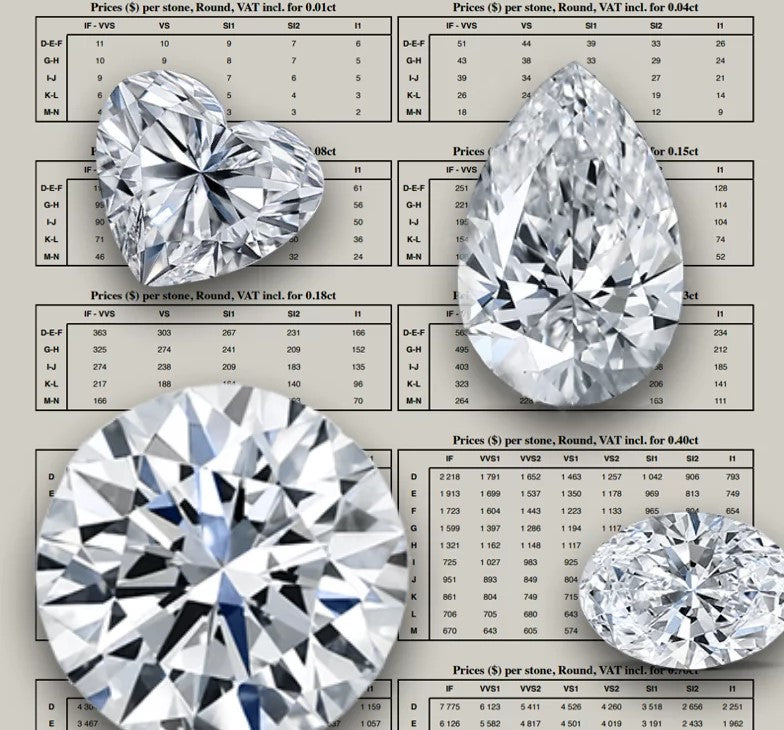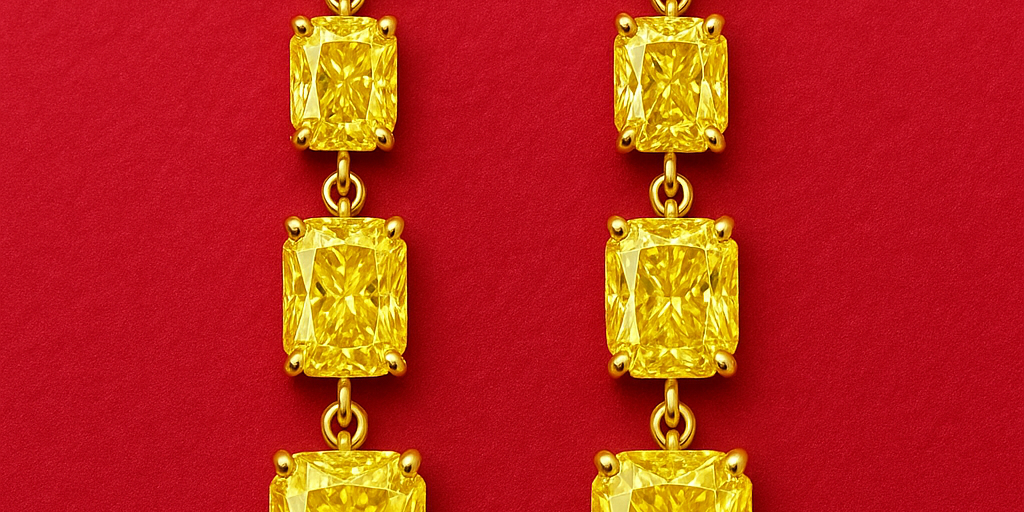Deconstructing Diamond Pricing
For decades, the dazzling allure of natural diamonds came with an equally dazzling price tag, often positioning them as the ultimate luxury and a symbol of exclusivity. However, with the emergence of lab-grown diamonds - which are physically, chemically, and optically identical - a fascinating price disparity has become evident. Many consumers, seeing two identical-looking stones with vastly different prices, are left wondering: "Why are natural diamonds more expensive than lab-grown? Is it simply about rarity, or are there hidden costs and complexities that explain this significant difference? Understanding this disparity is key to navigating the modern diamond market." This question goes to the heart of perceived value and the underlying economics of the jewelry industry.
At Motek Jewelry, our mission is to empower you with knowledge and choice, ensuring you find the perfect diamond that aligns with your values and budget. We believe that clarity in pricing helps you make a truly informed decision. This article will empathetically address the question, "Why are natural diamonds more expensive than lab-grown?" by deconstructing diamond pricing, revealing the complex factors that contribute to the cost of each, and ultimately showing why lab-grown diamonds offer an unparalleled opportunity for accessible brilliance.
The Problem Solved: This article addresses the common confusion about the price difference between natural and lab-grown diamonds, specifically "Why are natural diamonds more expensive?" It deconstructs the pricing by detailing the various costs and market dynamics of natural diamonds (rarity, mining, complex supply chain, marketing) versus lab-grown diamonds (controlled production, technological efficiency). This clarifies the value proposition of lab-grown, making it a sensible choice for those prioritizing quality and ethics within a budget, drawing them to Motek Jewelry.
1. The "Natural" Journey: A Costly Expedition
The journey of a natural diamond from deep within the Earth to your finger is incredibly complex, fraught with risk, and inherently expensive. Several factors contribute to its high price:
- A. Extreme Rarity and Unpredictable Discovery: Diamonds are formed billions of years ago under immense heat and pressure, and their discovery is akin to finding a needle in a colossal haystack. Exploration and mining efforts are vast, often requiring billions of dollars in initial investment for a single mine, with no guarantee of significant yields. Many exploration attempts yield nothing.
- B. Intensive Mining Operations: Extracting diamonds involves moving colossal amounts of earth (often tons of rock for a single carat of rough diamond), consuming massive amounts of energy, water, and specialized heavy machinery. These operations carry high operational costs, environmental remediation expenses, and significant labor outlays.
- C. Complex and Opaque Supply Chain: Once mined, rough diamonds travel through a multi-layered global supply chain involving sorting, cutting, polishing, certification, and multiple dealers and distributors. Each step adds markups and overhead. This long chain often lacks complete transparency, adding to costs and making ethical sourcing challenging.
- D. Legacy Marketing & Brand Premium: Decades of strategic marketing campaigns (like "A Diamond Is Forever") have successfully ingrained the idea of diamonds as rare, irreplaceable symbols of enduring love, justifying their premium price. A significant portion of the cost covers this brand perception and associated marketing efforts.
2. The "Lab-Grown" Journey: Controlled Creation, Streamlined Costs
In contrast, lab-grown diamonds are cultivated in highly controlled environments, eliminating many of the costs associated with natural diamond extraction:
- A. Manufacturing, Not Mining: Lab-grown diamonds are a product of advanced technology and scientific processes (HPHT or CVD). While these processes require significant capital investment in equipment, energy, and skilled labor, they are a manufacturing cost, not an unpredictable exploration risk. This allows for more predictable and ultimately lower production costs.
- B. Predictable Quality & Consistent Supply: Laboratories can control the conditions to produce high-quality diamonds with consistent color and clarity. This reduces waste from lower-quality rough and ensures a steady supply, bypassing the inherent rarity and unpredictability of natural deposits.
- C. Shorter, More Transparent Supply Chain: The path from the lab to the retailer is significantly shorter and more direct. Fewer intermediaries mean fewer markups and greater transparency, further reducing the final retail price.
- D. Focus on Intrinsic Value: While lab-grown diamonds are also marketed, their value proposition tends to emphasize their identical beauty, ethical origins, and accessible luxury, rather than an artificially inflated scarcity premium.
3. The Price Disparity: Quality for Less
Ultimately, the reason natural diamonds are more expensive than lab-grown boils down to a confluence of geological rarity, the immense cost and risk of extraction, and a historically controlled and marketed supply chain. Lab-grown diamonds, while identical in their chemical, physical, and optical properties, are produced through a more efficient, technologically driven process.
This efficiency translates into a significant advantage for the consumer: you can acquire a lab-grown diamond that is physically, chemically, and optically identical to a natural diamond, often 50-70% larger or of superior quality (color, clarity) for the same budget.
4. Choosing Your Diamond: Value vs. History
- Choose Lab-Grown When: You prioritize getting the absolute best quality and size for your budget, desire an ethically and sustainably sourced gem, and value its inherent beauty and identical properties over its geological formation process. This is the smart choice for modern engagement rings and everyday luxury.
- Choose Natural When: Your primary desire is a diamond with a natural, geological history, even if it means paying a significant premium for smaller size or lower quality, and if you are less concerned with ethical sourcing or environmental impact from mining.
At Motek Jewelry, we help clients understand these nuances, ensuring they make a confident and informed decision. We believe that lab-grown diamonds offer an unparalleled opportunity to own a breathtaking piece of jewelry, providing maximum brilliance and ethical peace of mind without the inflated costs of geological scarcity.
Ready to explore the stunning value of a lab-grown diamond?
Contact Motek Jewelry to discuss your options or schedule an appointment.
Phone: 8452136087 Email: contact@mymotek.com
Industry Expert References:
- Forbes - "The Growing Market For Lab-Grown Diamonds": https://www.forbes.com/sites/pamdanziger/2023/11/27/the-growing-market-for-lab-grown-diamonds/?sh=19150820793b (Discusses the market dynamics and pricing strategies for both types of diamonds.)
- GIA (Gemological Institute of America) - "Lab-Grown Diamonds": https://www.gia.edu/gia-news-research-lab-grown-diamonds (Provides insights into their identical properties and distinction from natural gems.)
- The New York Times - "The Diamond Dilemma: A Gem That Lasts Forever, Made in a Lab": https://www.nytimes.com/2021/04/23/style/lab-grown-diamonds.html (Explores the economic and ethical drivers behind the price difference.)
- Rapaport Diamond Report: https://www.diamonds.net/ (Leading industry source for diamond pricing and market analysis, often comparing natural and lab-grown.)
- Bain & Company - "The Global Diamond Industry Report": https://www.bain.com/ (Detailed economic analysis of the entire diamond pipeline, highlighting costs associated with mining and distribution.)
- International Gem Society (IGS) - "Synthetic Diamonds: The Complete Guide": https://www.gemsociety.org/article/synthetic-diamonds-guide/ (Explains the production methods of lab-grown diamonds and their cost implications.)
- De Beers Group (Lightbox Jewelry): https://lightboxjewelry.com/ (Their direct-to-consumer lab-grown brand's pricing strategy illustrates the cost-effectiveness of lab-grown production.)












































